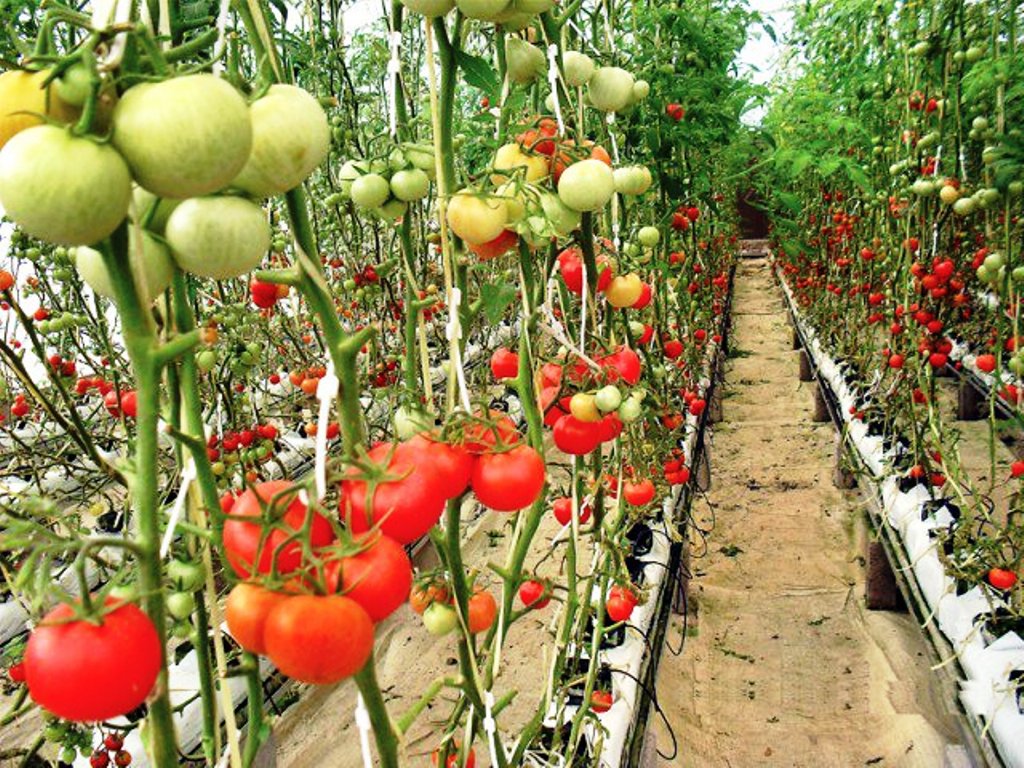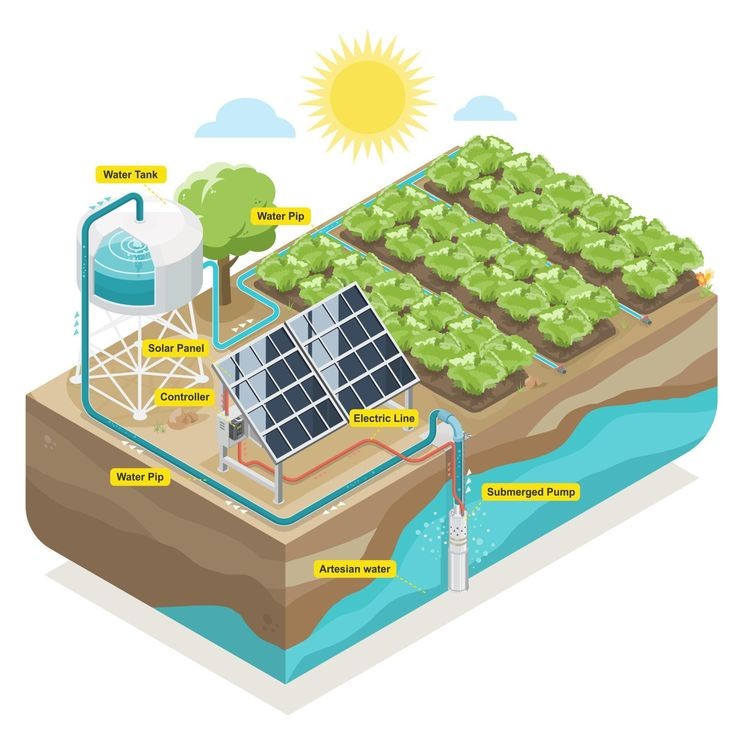
How Tomato Farming is done?
Tomato farming in Nepal involves selecting appropriate varieties like Roma or Gladiator, suited to the local climate. Farmers prepare the land by plowing and adding organic manure. Seedlings are grown in nurseries for 4-6 weeks before transplanting them to fields. Consistent irrigation, often through drip or furrow methods, ensures healthy growth. Fertilizers, both organic and chemical, are applied for optimal yield. Farmers manage pests and diseases through organic or chemical treatments. Pruning, staking, and proper care enhance plant growth. Once harvested, tomatoes are sorted, packed, and sold in local markets or transported to larger cities like Kathmandu for distribution.

How Solar water pumping is done?
Solar water pumping systems use solar panels to convert sunlight into electricity, which powers water pumps for applications like irrigation and drinking water supply. The system typically includes solar panels, an inverter (to convert DC to AC power for pumps), and a controller to regulate and protect the system. The pump can be submersible (for deep water sources) or surface-mounted (for shallow sources), drawing water from wells, rivers, or reservoirs. The pumped water is often stored in tanks for later use. Solar water pumps are environmentally friendly, cost-effective, and require minimal maintenance, making them ideal for regions with abundant sunlight.
